15 October 2020, “Kieran McCarthy, Independent Cork City Councillor and Local Historian discusses plans for the tallest building in Ireland to be built in Cork City, and what it means for the redevelopment of the country’s second city”, Plans for Ireland’s Tallest Building Receive Permission, Morning Ireland, RTE Radio 1, https://www.rte.ie/radio/radioplayer/html5/#/radio1/21850843
Category Archives: Uncategorized
Kieran’s Our City, Our Town, 15 October 2020
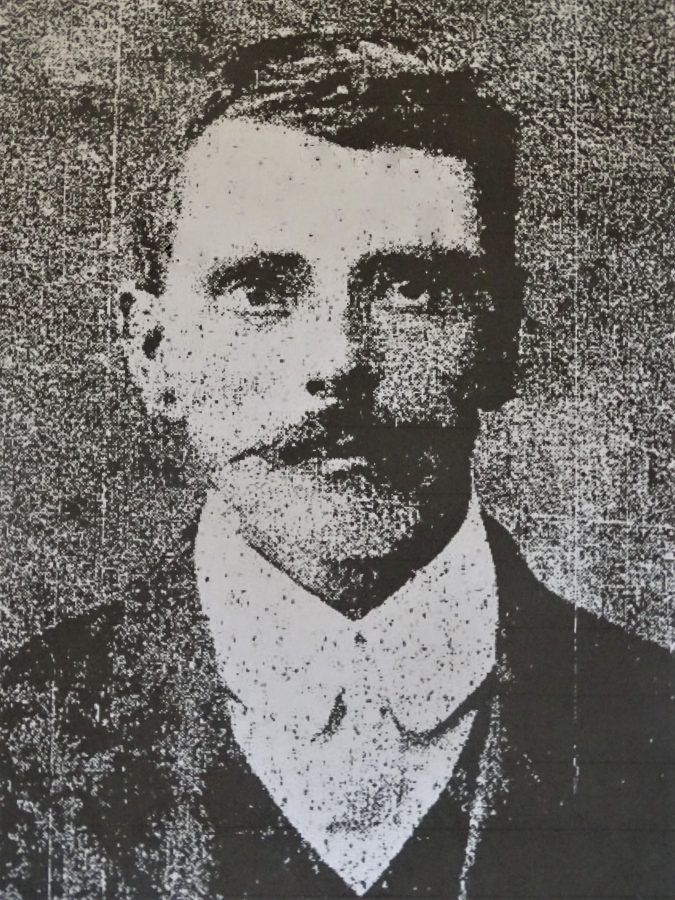
Kieran’s Our City, Our Town Article, 15 October 2020
Remembering 1920: The Last Stand of Michael Fitzgerald
The 16 October 2020 coincides with the centenary of the death of Michael Fitzgerald (1881-1920), who was one of the eleven hunger strikers in Cork Gaol in October 1920. Born in Ballyoran in Fermoy, Michael before his arrest lived in Clondulane, where he worked in a local mill. In 1914, he enlisted he joined the Irish Volunteers and was an active member building up the organisation in Fermoy and the wider region in North Cork.
In time Michael became Commandant of the 1st Battalion of Cork, No 2 Brigade and worked closely with Commandant Liam Lynch. Michael was in charge of the small body of Volunteers who captured Araglen police barracks on Easter Sunday 1919. He was arrested and sentenced to three months imprisonment in Cork Gaol. He spent the most part of those three months in solitary confinement in Cork Gaol, together with a number of other prisoners. He had been released only about a fortnight after serving this sentence of three months, when he was again arrested on 8 September 1919, in connection with an attack on British soldiers at Fermoy when Private William Jones was shot dead. Since his arrest on 8 September 1919, he has been in prison, principally at Cork Gaol. On 11 August 1920 he went on hunger strike, a cause which Terence MacSwiney also took up, when he was arrested later in August.
The Cork Examiner records that at the time of Michael Fitzgerald’s death on Sunday night 17 October 1920 at 9.45pm, four priests, four nuns, his relatives and friends and the relatives of the other prisoners worn present. Father Forrest (Australia), Fr Fitzgerald (Prison chaplain), Fr Duggan (Assistant Prison Chaplain), and a chaplain from the Cork Detention Camp were present in the cell as were also the dying prisoner’s friends, and four nuns.
Relatives of the other prisoners were kneeling outside the cell in the corridor reciting the Rosary. Two candles, which were on either side of a crucifix, were the only lights in the cell. The singing of hymns by the crowds, who had gathered outside the gaol, were distinctly heard in the quietude of the cell up to about 9.30pm. At this hour, mindful of curfew, the people outside began to leave for home, and the singing ceased. Fr Fitzgerald began reciting the third rosary, in which all fervently joined, and the only sounds heard in the cell were the murmurs of prayers and the slow breathing of Michael, which was becoming more laboured by the minute. Fr Fitzgerald had only gone to the second decade of the Rosary when at 9.45pm, one of the nuns at the bedside turned around. She had no need to speak for all understood that Michael was very near the end. He breathed with more and more difficulty, and soon after passed away.
A constant visitor to the deceased during the hunger strike was a Miss Condon from Fermoy, to whom he had been engaged. About seven days previously they had decided to get married in the prison if possible and they had informed Fr Fitzgerald, the prison chaplain of this intention. The chaplain undertook to do the ceremony on the condition the permission was granted by the gaol authorities. They refused to allow the marriage ceremony. Michael’s friends then wrote to the Bishop of Cork, Daniel Cohalan, who granted permission to another priest to perform the ceremony. In early October, the priest accompanied by Miss Cordon and others visited the cell in which Michael lay, and all the preparations for the marriage were complete. Michael had even procured a wedding ring, which he kept under his pillow. The wedding was to have been performed accordingly but at the last moment the prison authorities intimated that if the ceremony was proceeded with, they would prohibit all visits from relatives to the hunger strikers for the future. In order to not rob his comrades of this last privilege Michael accordingly agreed not to proceed with marriage.
From noon on 17 October there was considerable military activity in the vicinity of the gaol. At intervals, lorries, filled with armed soldiers, arrived, and while, some of the military entered the building others took up positions in its precincts. These, lorries went to and from the military barracks to the prison at regular periods. Many friends of the prisoners assembled from an early hour outside the gaol, and their number were assembled by the arrival of relatives of Michael, and people from Fermoy in motor cars and other vehicles. It was learned that the military authorities had decided to hold a Court of Enquiry at Victoria Barracks at 11am that morning into the circumstances surrounding Fitzgerald’s death. During the afternoon, a number of military officers, those who constituted the Court of Inquiry visited the Gaol. and, having viewed the body, gave permission to the relatives for Michael’s removal.
The ensuing funeral in SS Peter and Paul’s Church was enormous with crowds lining Cork City Centre to pay their last respects. The coffin was then conveyed to Kilcrumper Cemetery near Fermoy where it was met by another enormous crowd. On his burial three volleys were fired over Michael’s grave. Looking on throughout the day were policing authorities and the Black and Tans. The tension was rife.
Michael’s death was the first death of a hunger striker in an Irish prison since the death of Thomas Ashe in Mountjoy Prison on 25 September 1917. Michael’s death was to follow in quick succession by Joseph Murphy and Terence MacSwiney.
To be continued…
My new book Witness to Murder, The Inquest of Tomás MacCurtain is now available to purchase online (co-authored with John O’Mahony 2020, Irish Examiner/www.examiner.ie).
Captions:
1070a. Michael Fitzgerald, c.1920 (picture: Cork City Library).
1070b. Grave of Michael Fitzgerald, Kilcrumper Graveyard Fermoy, present day (picture: Kieran McCarthy).
1070c. Monument to Michael Fitzgerald in Fermoy, present day; Michael Fitzgerald Road also exists in Togher, Cork City (picture: Kieran McCarthy).
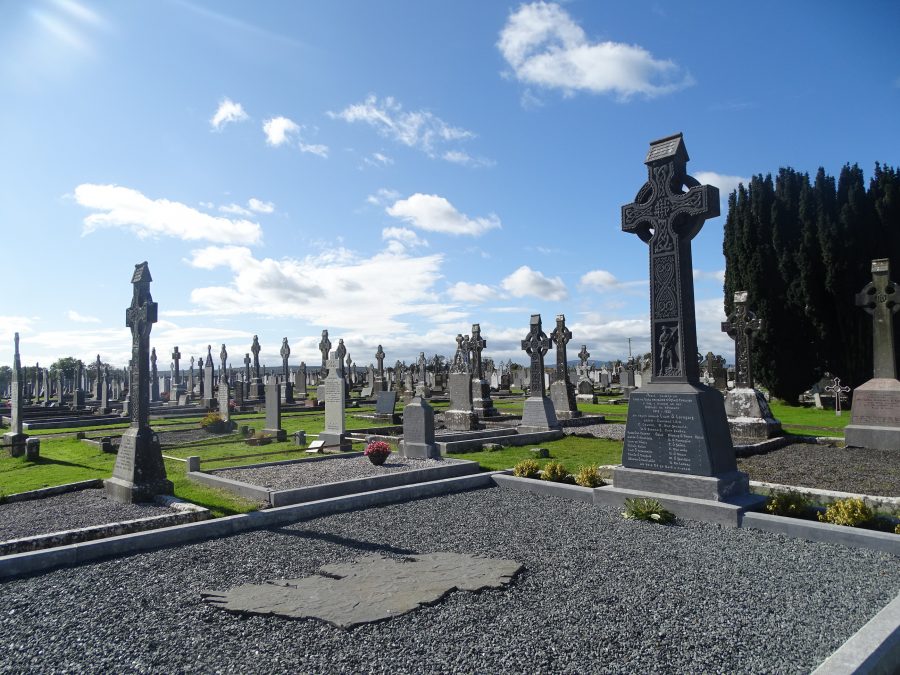
1070c. Monument to Michael Fitzgerald in Fermoy, present day; Michael Fitzgerald Road also exists in Togher, Cork City (picture: Kieran McCarthy).
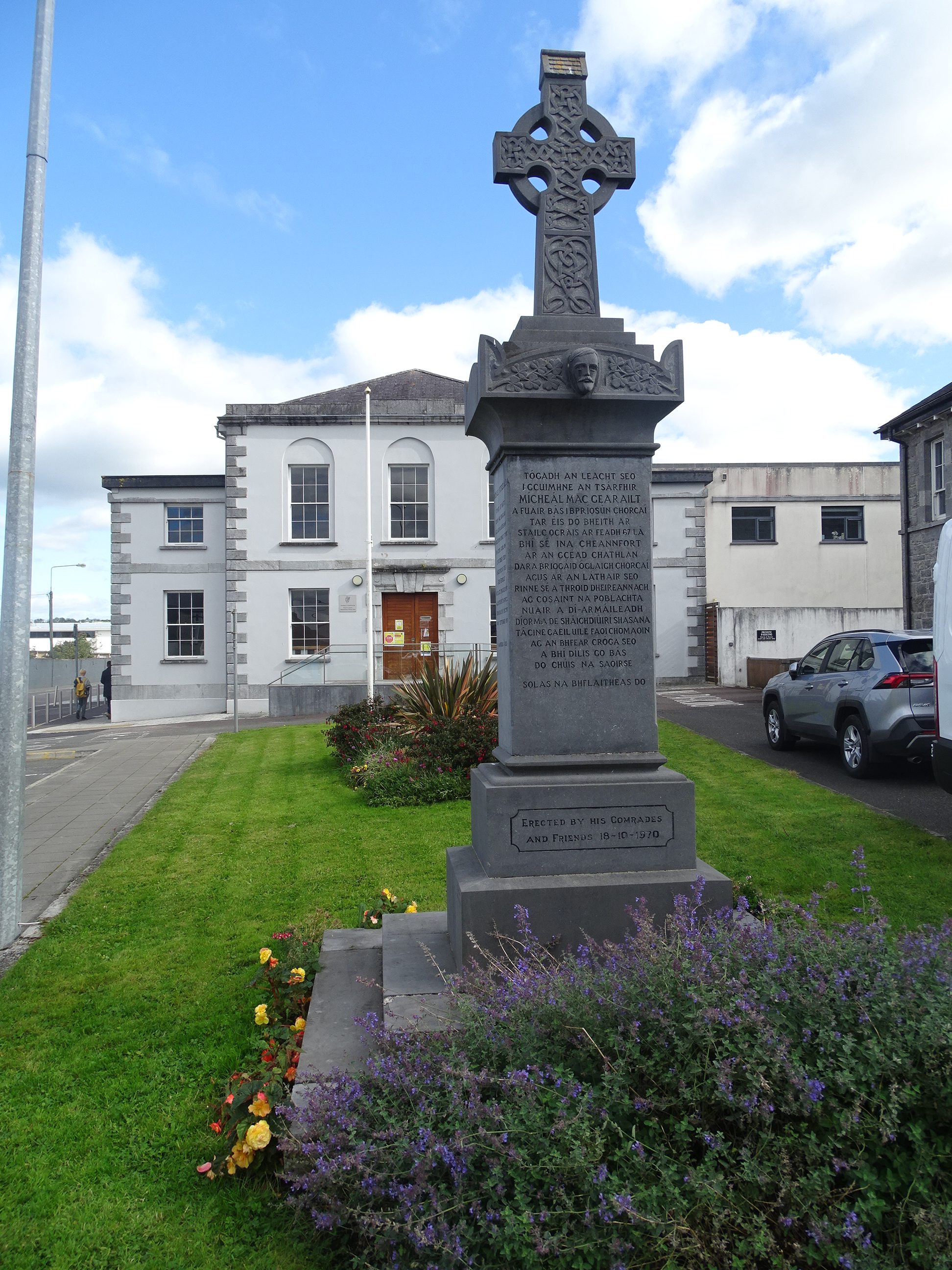
1070c. Monument to Michael Fitzgerald in Fermoy, present day; Michael Fitzgerald Road also exists in Togher, Cork City (picture: Kieran McCarthy).
Marina Park Update, 12 October 2020
12 October 2020, “In a question posed by Independent councillor Kieran McCarthy who requested a progress report on the Marina Park, Cork City Council’s Director of Services David Joyce said the contactor is making “excellent progress” despite a seven-week period of being off site from the end of March until mid-May due to Government guidelines”, First phase of Marina Park Project on track for 2021 completion date, https://www.echolive.ie/corknews/First-phase-of-Marina-Park-Project-on-track-for-2021-completion-date-7608fcc9-0216-4a01-97b9-7b8871a6e796-ds
Kieran’s Question to CE and Motions, Cork City Council Meeting, 12 October 2020
Question to CE:
To ask the CE for a progress report on Marina Park? (Cllr Kieran McCarthy).
Motions:
That road safety measures be again looked at the junction of Ballinlough Road and Bellair Estate. The corner of Old Lady of Lourdes National School is a blind corner and has many people crossing this dangerous stretch of road everyday (Cllr Kieran McCarthy).
That arrangements be made that the 1779 archway behind Supermacs on Kyrl’s Quay be abstracted and placed in a more prominent position nearby to reflect its stature, history and design (Cllr Kieran McCarthy).
To get a progress report at the South East Local Area Committee on progress in installing ramp on Churchyard Lane as agreed by Councillors some time ago (Cllr Kieran McCarthy).
That Cork City Council consider signing up to the Walk 21 International Charter for Walking (Cllr Kieran McCarthy).
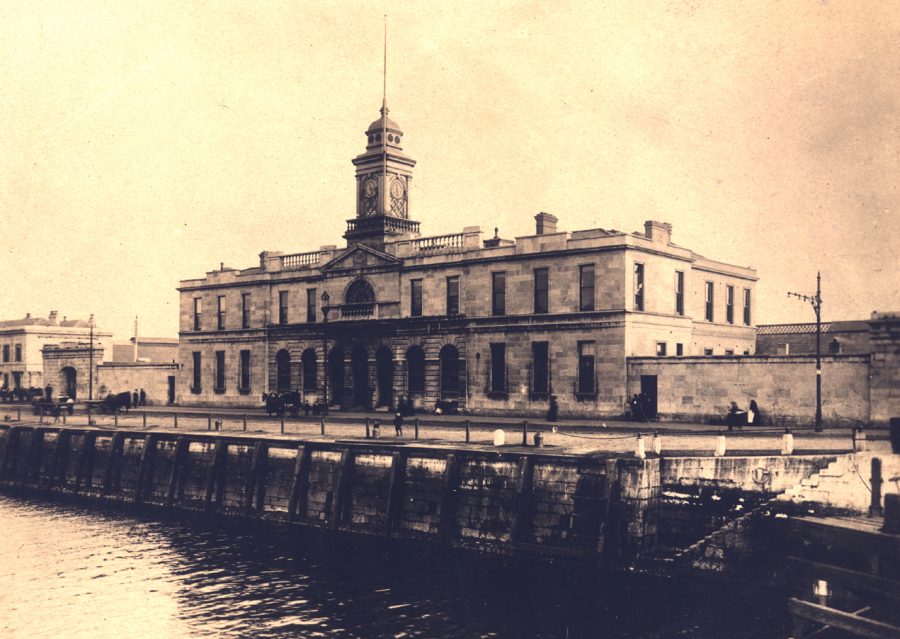
Pictures, Autumnal Transitions, Marina, Cork, 11 October 2020
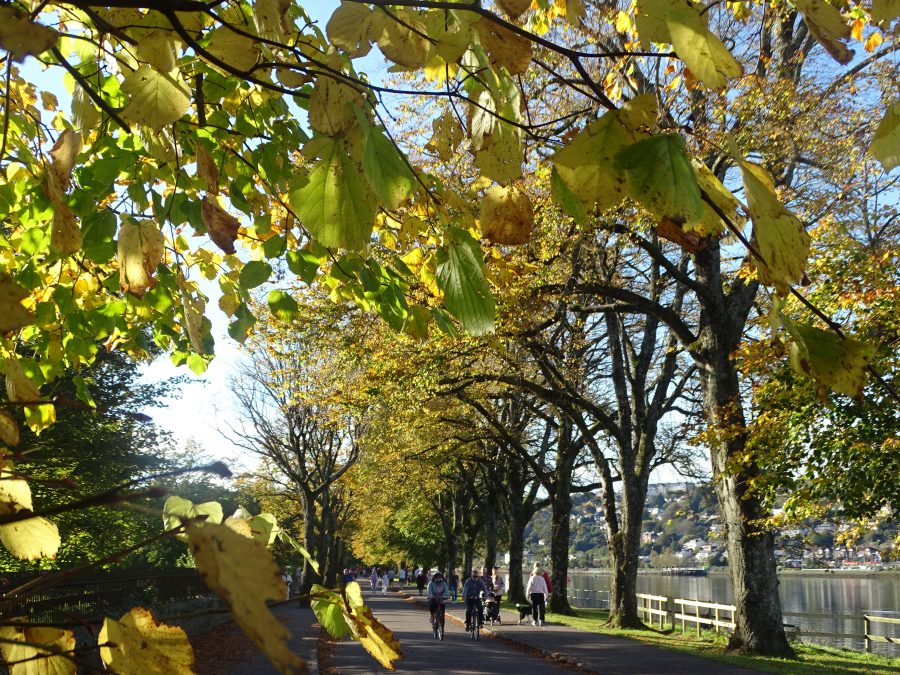
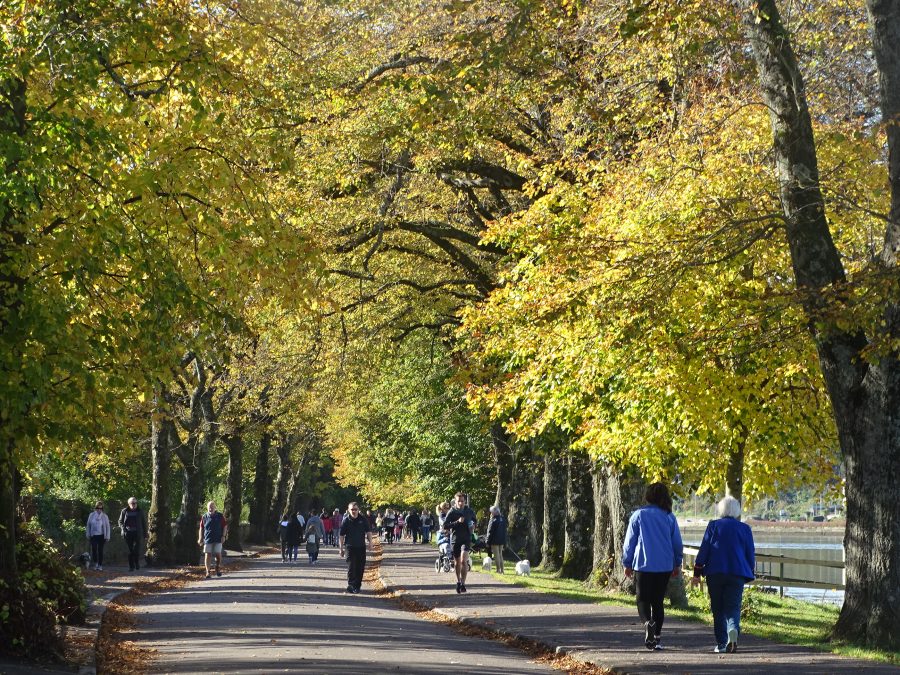
The Marina, Cork, 11 October 2020 (picture: Cllr Kieran McCarthy)
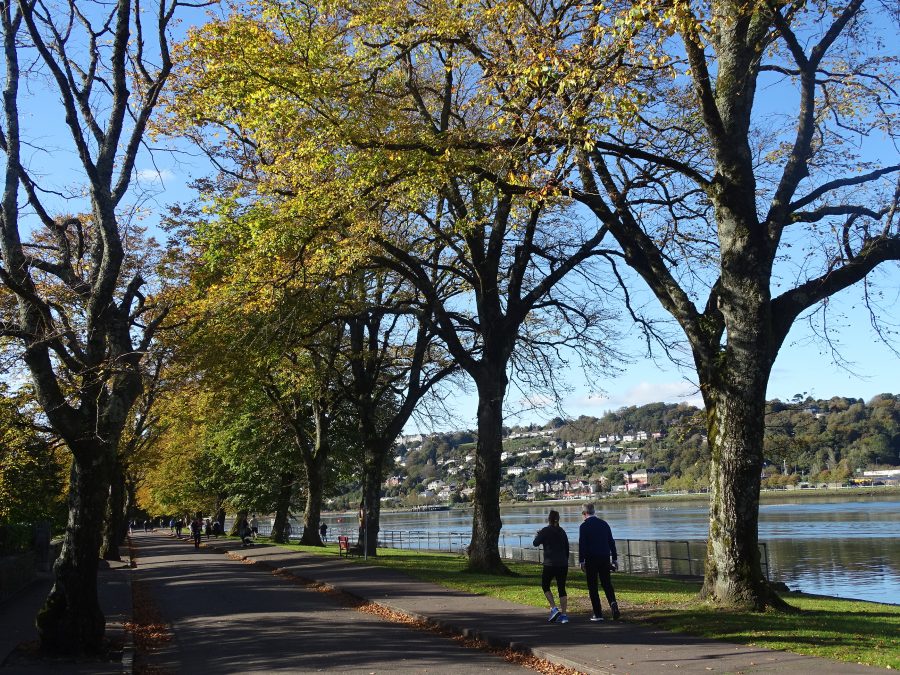
The Marina, Cork, 11 October 2020 (picture: Cllr Kieran McCarthy)
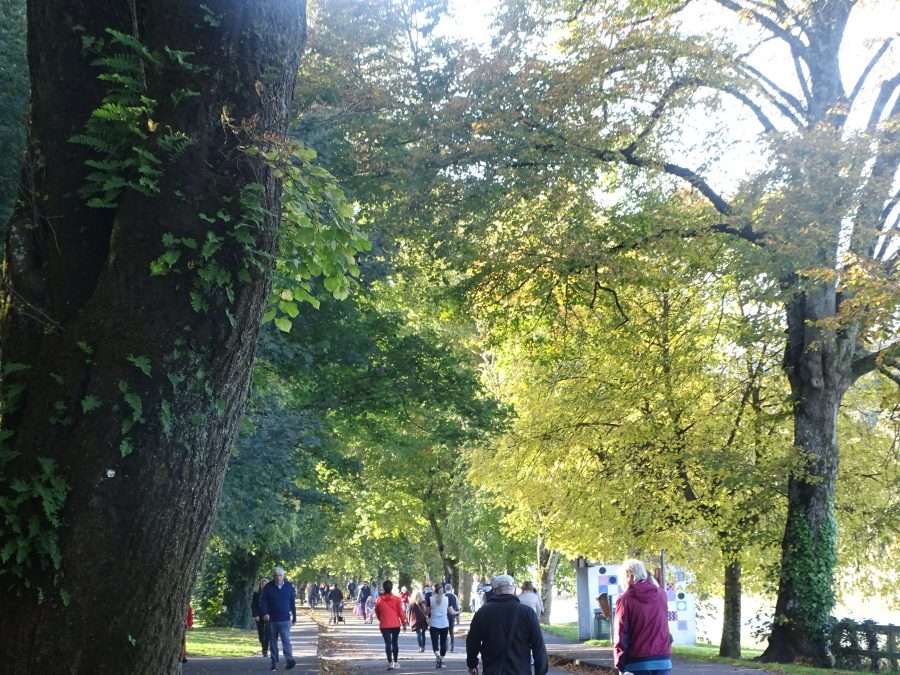
The Marina, Cork, 11 October 2020 (picture: Cllr Kieran McCarthy)

The Marina, Cork, 11 October 2020 (picture: Cllr Kieran McCarthy)
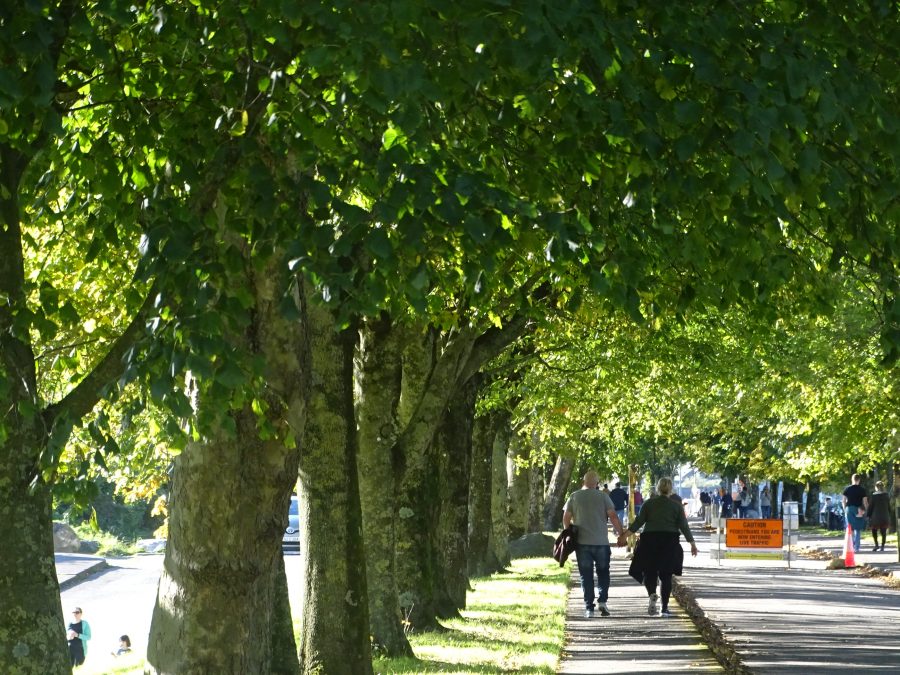
The Marina, Cork, 11 October 2020 (picture: Cllr Kieran McCarthy)
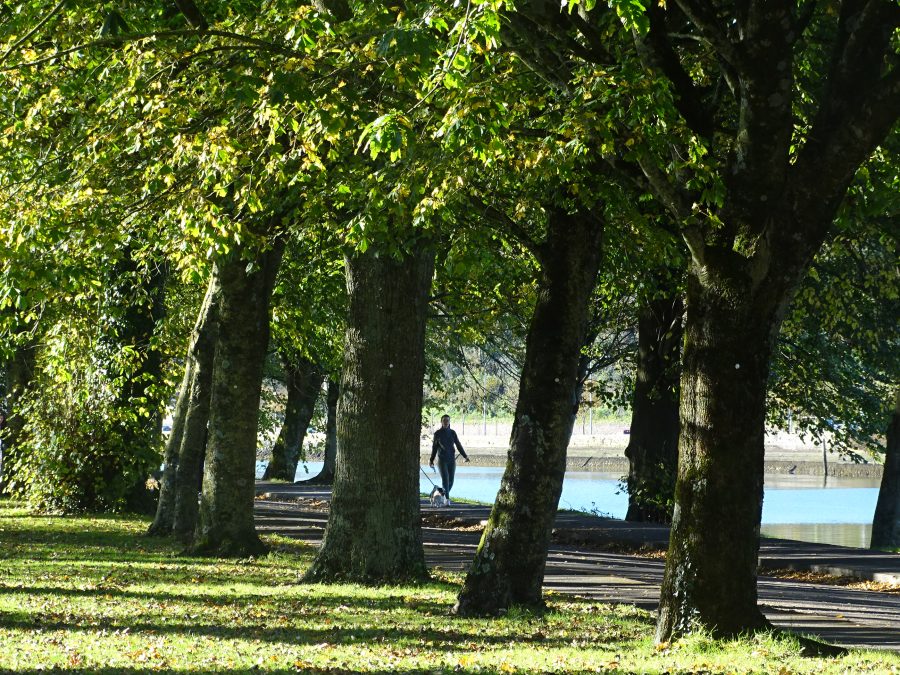
The Marina, Cork, 11 October 2020 (picture: Cllr Kieran McCarthy)
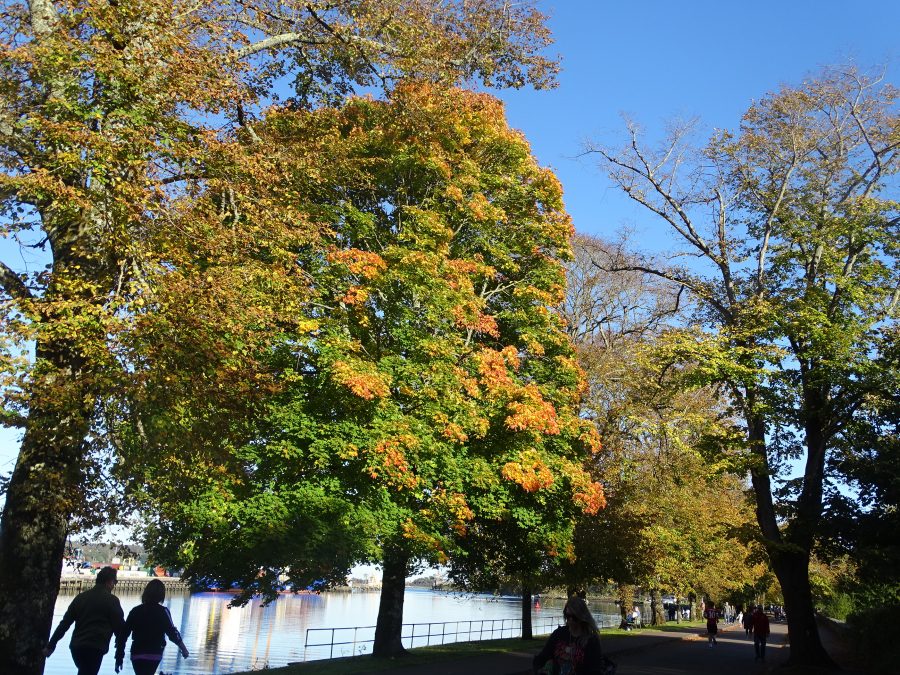
The Marina, Cork, 11 October 2020 (picture: Cllr Kieran McCarthy)
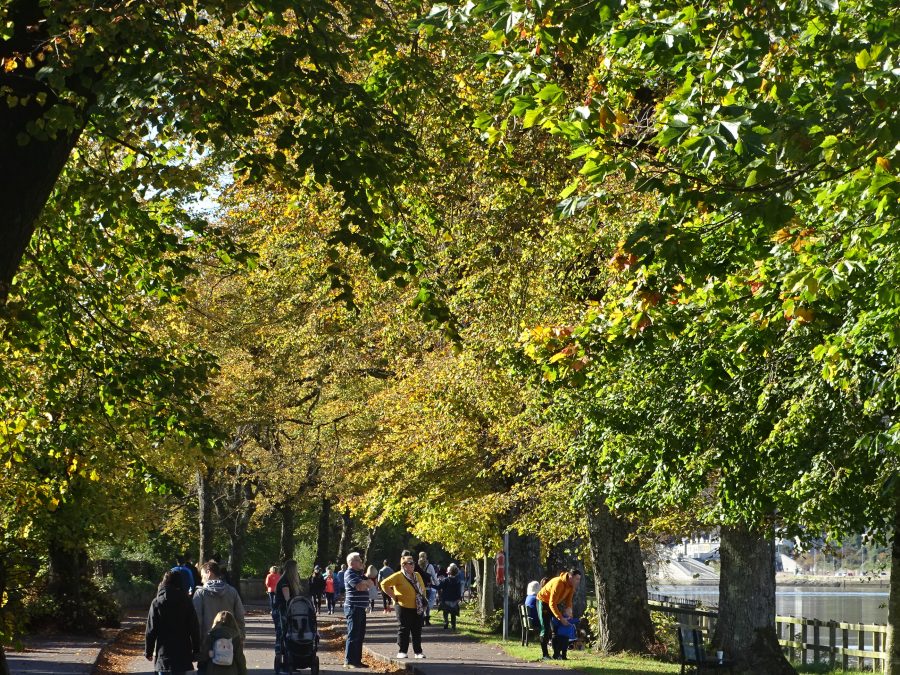
The Marina, Cork, 11 October 2020 (picture: Cllr Kieran McCarthy)
Kieran’s Our City, Our Town, 8 October 2020
Kieran’s Our City, Our Town Article,
Cork Independent, 8 October 2020
Remembering 1920: The Attack on City Hall
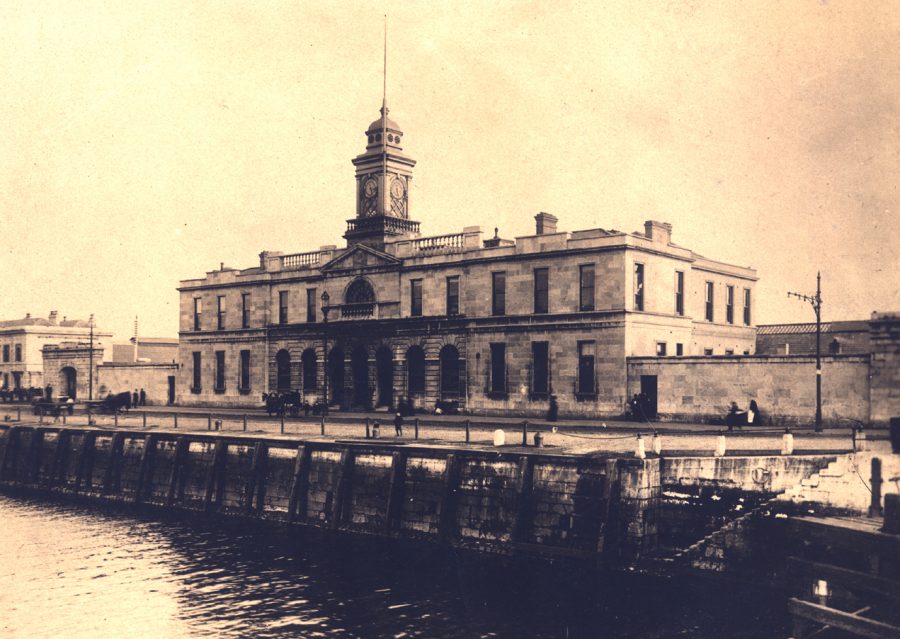
1069a. Old Cork City Hall, c.1920 (source: Cork City Through Time by Kieran McCarthy & Dan Breen).
Reprisals by the Black and Tans for the Barrack Street Ambush on Friday 8 October and for the connected death of Private John Gordon Squibbs were quick. The stakes were heightened again when that Friday night City Hall (old) was targeted by the Tans for an arson attack. Even though it was not fully successive, much damage was caused. The attack commenced about 3.45am, when a volley of shots was fired evidently from rifles at the building. The witness to the attack was the building’s night watchman who described to the Cork Examiner how the events unfolded.
The firing ceased after a few minutes, and all was again quiet for some ten minutes or so, when there was a renewed outburst of rifle firing. While the second volleys were being fired the night watchman heard two loud bomb explosions. He went into the vestibule of the City Hall and saw that the western portion of the building was in flames. He had already telephoned the city’s Fire Brigade when he had heard shots, and now when he saw the conflagration in the Public Health Offices he again communicated to the brigade.
The fire brigade, under Captain Alfred Hutson, were not slow to arrive. Lines of hose were speedily laid, and water was soon poured into the Public Health and Waterworks offices. The flames at first spread with alarming rapidity, and at one time it looked as if that portion of the Hall would be completely burnt out. The strenuous efforts of the members of the fire brigade, however, soon brought it under control. After several hours, the flames were overcome, and the fires subdued. Two men were left in charge for the remainder of the morning.
The destruction of the offices of Public Health and the Waterworks, and the adjoining offices was very considerable. Document, records, and other literature relating to municipal affairs were all were destroyed. The windows in this portion of the building, looking out on the river, were all smashed, and it was obvious that the bombs, which exploded in the building were hurled through these windows. In the interior of the building there is ample evidence of the destruction wrought by the bomb explosions. In the Public Health Department, picture frames and other accessories were smashed to pieces by the force of the explosion, as was also the fender of the fireplace. A bomb, which exploded in the eastern portion of the building, also caused considerable damage.
At this side of City Hall were situated the lamplighter and watchman’s shed and further back was a yard in which wheelbarrows, spades, and similar implements were kept. The bomb appeared to have exploded in the centre of the yard, and the ground was all torn up, with one of the wheelbarrows badly damaged. The rifle firing seemed to have occurred at the other side of the building for the walls and ceilings around the Public Health and Waterworks Office’s bore several bullet marks.
Immediately overhead, the City Engineer’s department narrowly escaped destruction both from the conflagration and the bombs which were hurled up at the windows. One bomb, indeed, entered, and exploded in a corner near a safe, blowing portion of a floor away.
Later on that weekend, on Sunday 10 October 1920 large parties of RIC, working in conjunction with the Black and Tans, carried out a very unexpected raid in Cork City Centre. The streets were, as usual on Sunday afternoon, thronged at the time, and the sudden swoop created much alarm and panic. About 2.40pm the police and the Black and Tans took possession of MacCurtain Street, Coburg Street, Bridge Street, St Patrick’s Bridge, St Patrick’s Street, the Grand Parade, and other thoroughfares in the centre of the city. The lorries in which the military arrived were escorted by armoured cars. Cordons were drawn across the streets at several points and the large numbers of people on the streets at the time found themselves surrounded military or police pickets.
As the civilians were ordered to halt, they were obliged to submit to be searched. Even those outside the cordons, but in the immediate vicinity, were not exempt from the searches. For the most partthe people quietly allowed themselves to be searched, after which they were permitted to go outside the cordons, and wherever they wished.In this manner hundreds of civilians were searched.
In some cases, the military commands to halt were not obeyed, and one man, who it is stated, did not halt when called upon to do so, was shot. His name is given was Michael Griffin, a labourer, aged about 60 years residing in Cattle Market Street, Cork. It appears that he was passing through Merchant street at the time, and was called upon to “halt”, but either did not hear or refused to obey the challenge. The Black and Tans opened fire and he was struck by a bullet. The wounded man collapsed and was unable to move The Corporation ambulance was sent for and was quickly on the scene. He was conveyed to the South Infirmary but in the hours that followed he died. The military parties withdrew from the streets about 3.45pm, having made one arrest. Such policing manoeuvres only increased as October and November 1920 progressed.
More next week…
This week’s column marks the 21st year mark of Our City, Our Town (started in early October 1999). Thanks to everyone for their support along the journey.
My new book Witness to Murder, The Inquest of Tomás MacCurtain is now available to purchase online (co-authored with John O’Mahony 2020, Irish Examiner/www.examiner.ie).
Captions:
1069a. Old Cork City Hall, c.1920 (source: Cork City Through Time by Kieran McCarthy & Dan Breen).
Autumnal Transitions, Beaumont Park, Cork, 6 October 2020
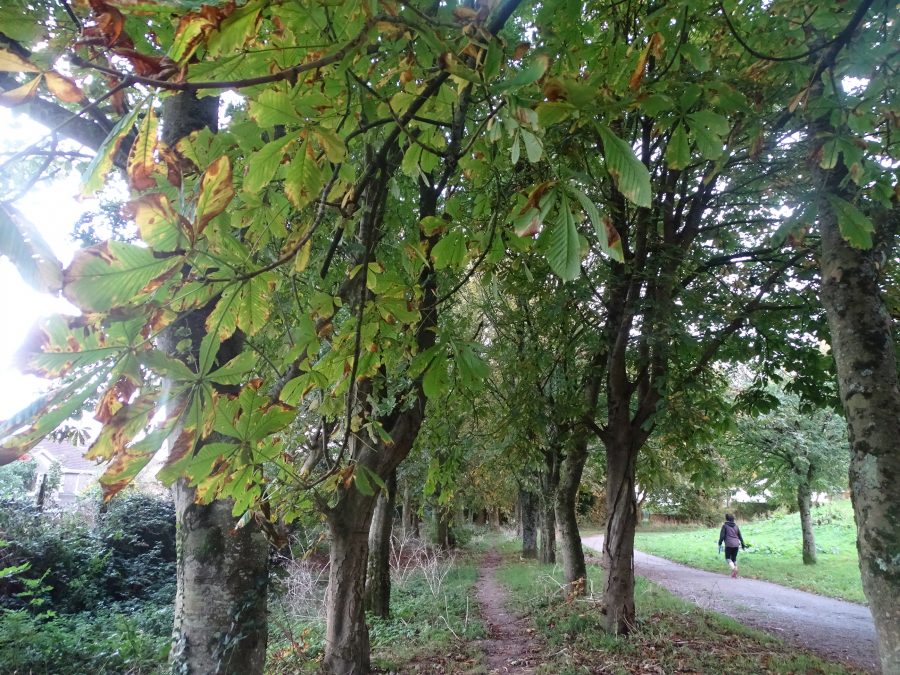
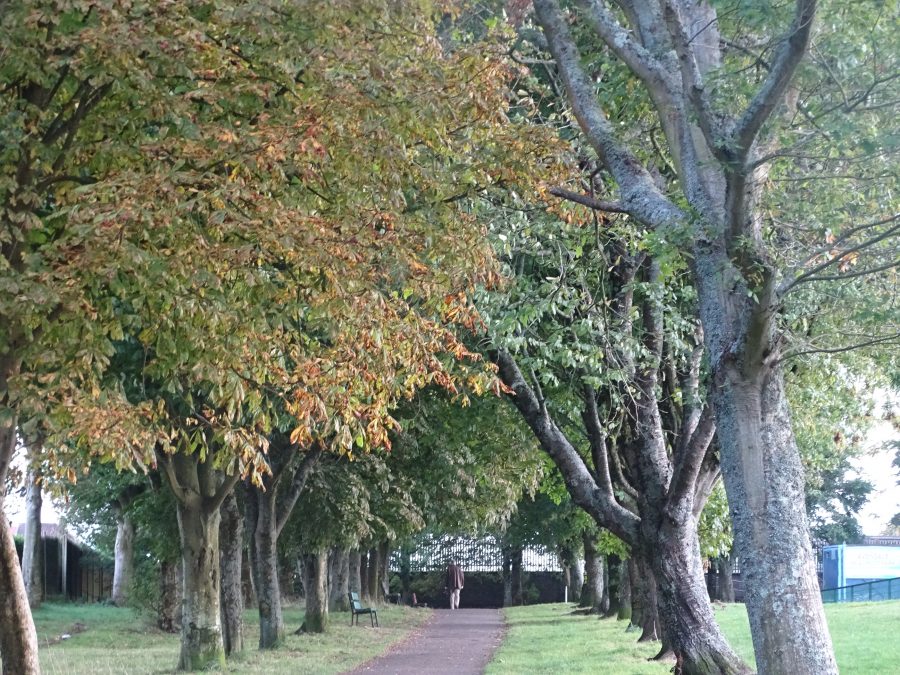
Autumnal Transitions, Beaumont Park, 6 October 2020 (Cllr Kieran McCarthy)
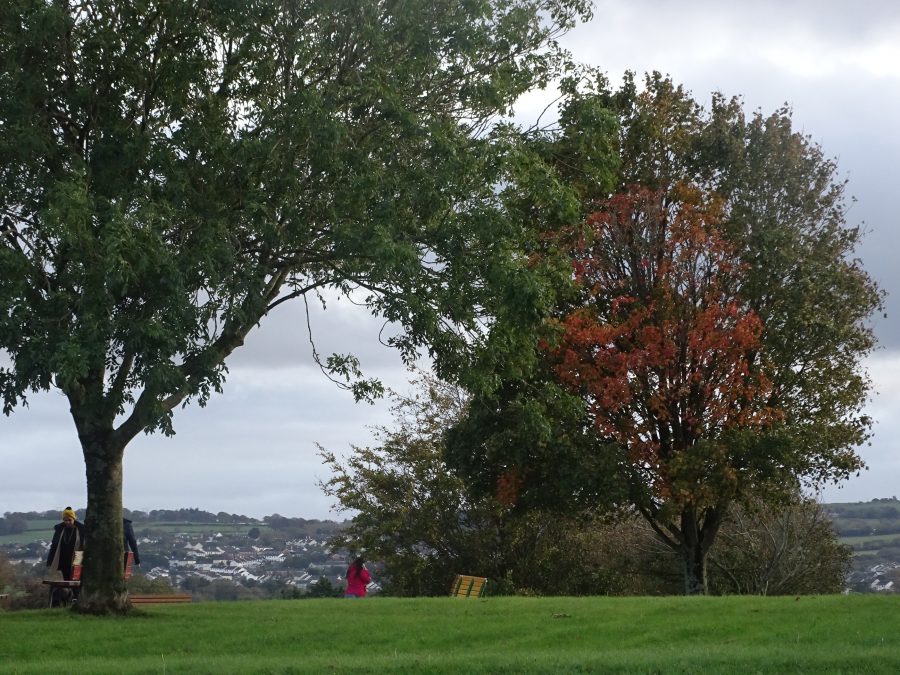
Autumnal Transitions, Beaumont Park, 6 October 2020 (Cllr Kieran McCarthy)
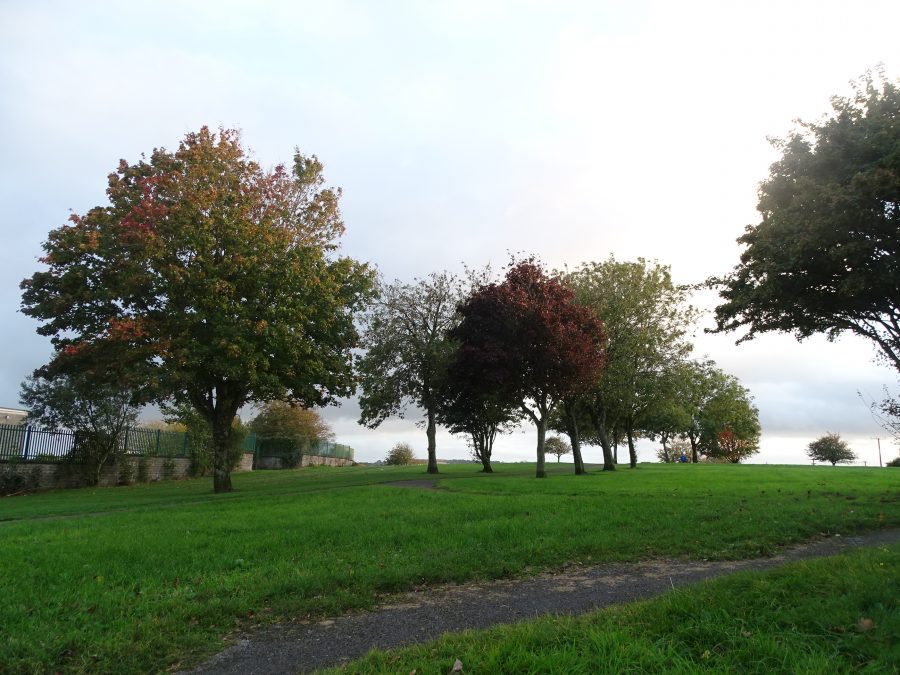
Autumnal Transitions, Beaumont Park, 6 October 2020 (Cllr Kieran McCarthy)
Cllr McCarthy welcome City Council’s Blue Vest Initiative
Independent Cllr Kieran McCarthy has welcomed Cork City Council’s launch of a new initiative that aims to promote social distancing and help protect vulnerable members of the community from Covid-19.
One thousand social distancing blue vests have been distributed across Cork City through various community centres and community groups. The blue vests will allow people with an underlying condition or who had been cocooning to get out and about, while reminding others to respect social distancing guidelines.
Cllr McCarthy notes: “The idea came about through the Covid-19 Community Response Forum in Mahon, just one of the 16 community response groups set up by Cork City Council with the HSE and partners in response to the Covid-19 restrictions. Feedback received from people cocooning as they came back out into communities when restrictions eased indicated that that they were very nervous and felt that people weren’t giving them enough space. The purpose of the vests is to indicate clearly that the person is asking others to keep their two-metre distance”.
Following a pilot of the initiative in Knocknaheeny and Mahon, the blue vests are now available through local community centres and a further 250 blue vests will also be distributed through the Friendly Call programme.
Family members of people who are still cocooning will also find the vests very useful in terms of indicating to others that they need to keep their distance in order to decrease the risk of bringing Covid-19 back into the family home. If interested please contact Cork City Council on community@corkcity.ie. Please note that the vests are available on a first-come first-served basis.
Kieran’s Our City, Our Town, 1 October 2020
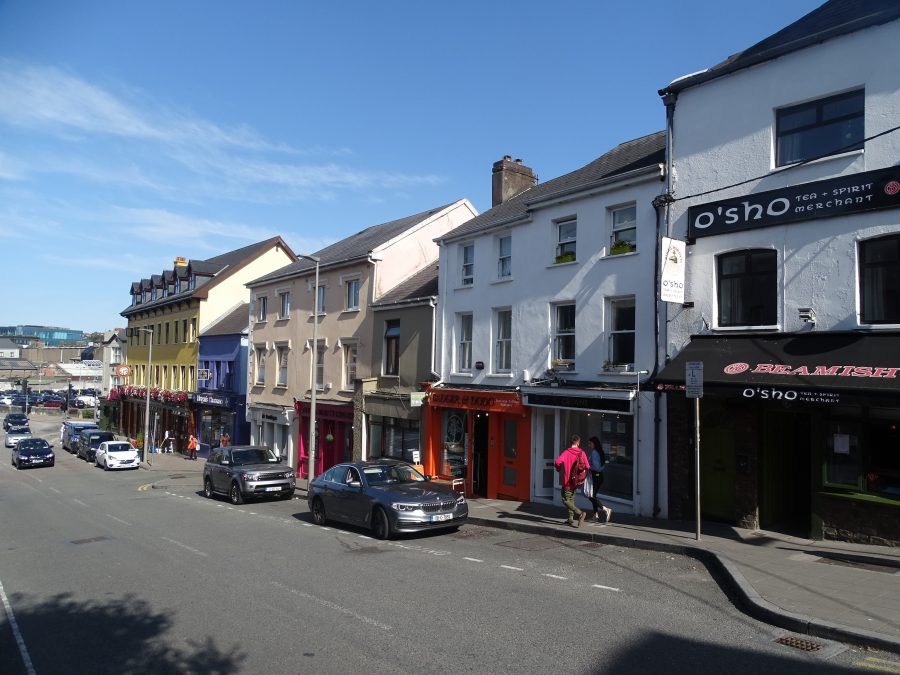
1068a. Cove Street and Barrack Street junction, 2020 (picture: Kieran McCarthy).
Kieran’s Our City, Our Town Article,
Cork Independent, 1 October 2020
Remembering 1920: The Barrack Street Ambush
As the War of Independence intensified, the tit-for-tat violence continued in late September and into October 1920. Engineer Officer of the 2nd Battalion, Cork No.1 Brigade Michael O’Donoghue in his witness statement (WS1741) in the Bureau of Military History records he was twenty years of age running the intelligence, engineering and the signals and communications services. A Special Services unit was also organised and trained in Cork City. A small group of the latter group were trained in machine gun use and assembling. These skills were put to full use during the autumn of 1920.
At the end of September 1920, an attempt was made by men of the 1st and 2nd Battalions of Brigade No.1 to assassinate the British General Peter Strickland who, at the time, had his quarters in Cork Barracks, Cork. Occasionally at irregular tames, Strickland left the barracks in a motor car accompanied by an armed escort.
Michael Murphy, who was Commandant of the 2nd Battalion in his witness statement (WS1547) notes that in late September 1920, he and others watched for his arrival. Every day, different Volunteers took up duty at various street corners in the vicinity of the barracks. All were armed with revolvers and some with grenades. On 25 September 1920, Strickland’s car appeared, travelling at a fast pace along King Street. Volunteers were taken somewhat by surprise but opened fire on him and his escort with revolvers and grenades. However, the attack was not a success. The convoy got through safely with Strickland.
On the night of 7 October 1920, Michael recalls a further ambush scenario on Barrack Street. He happened to be in the shop owned by sisters Nora and Sheila Wallace in Cork’s St Augustine Street. This shop was used as a clearing house for IRA dispatches and was a regular meeting place for IRA men generally. The Wallace sisters were active Cumann na mBan figures and were well respected in their collaboration with the brigade officers.
On the night in question whilst in Wallace’s with Seán Hegarty, Brigade Officer in Charge, an IRA member came into the shop. He was a civilian employee in the military barracks, Cork, where he worked as a clerk in the British Military Intelligence office. On many occasions he had passed on information of very great value. He told those present that a lorry of armed soldiers would be leaving Cork barracks the following morning about 9am and would proceed across the city to Elizabeth Fort, off Barrack Street. Michael Murphy discussed the possibility of attacking the lorry with Seán Hegarty and it was agreed that Michael himself should undertake the job on the following morning, 8 October 1920. That night, after curfew, Michael contacted about 20 men from his battalion area and told them to be at the Thomas Ashe Hall, Father Mathew Quay, the following morning about 8am. They were to come armed with revolvers and grenades.
On the morning of 8 October Michael met the men in the Hall as arranged and explained his proposed attack strategy on the military lorry. It was his intention to attack the military lorry himself along with Tadhg Sullivan, one of his company captains. They were to engage them with grenades and revolvers. The remainder of the party were then dispersed to positions covering the British military garrison at Elizabeth Fort and the police barracks at Tuckey Street and Union Quay. All of these posts were within a couple of hundred yards radius of the point in Barrack Street where the proposed attack was to take place.
Michael and Tadhg took up position at a corner on the junction of Barrack Street and Cove Street where there was a steep incline. They knew the lorry would have to slow down to get in gear when it reached that point. At about a quarter to nine the lorry came into view. As expected, the lorry slowed down, and Michael saw that it contained three soldiers in the driver’s cab and eight to ten inside in the open lorry section. He threw the first grenade, which hopped off the side of the lorry and exploded wounding Tadhg and himself but not seriously. Tadgh and Michael then hurled grenades into the cab killing one of the private officers. The third grenade got into the back of the lorry causing casualties amongst the soldiers there.
The lorry continued on up the hill and was met by a volley from revolver-men stationed further up the road. Those soldiers who were not wounded now jumped out of the lorry and took refuge in nearby houses. The ambush lasted about fifteen minutes when Michael ordered the lads to break off the attack due to a lack of ammunition and they scampered.
William Barry, Captain of D Company of the 2nd Battalion in his witness statement (WS1708), notes that the Barrack Street action was a short one by reason of the fact that military and police garrisons were within a couple of hundred yards of us and were stationed at Elizabeth Fort, Tuckey Street RIC Barracks and Union Quay RIC barracks. He further notes that that his side suffered no casualties on that occasion and records that the arms and ammunition used by them on this occasion were kept in a large box in Hosford’s Bakery, South Terrace, Cork, where Commandant Michael Murphy and himself were engaged building the premises.
Kieran’s new book Witness to Murder, The Inquest of Tomás MacCurtain is now available to purchase online (co-authored with John O’Mahony 2020, Irish Examiner/www.examiner.ie).
Captions:
1068a. Cove Street and Barrack Street junction, 2020 (picture: Kieran McCarthy).
1068b. Present day interior of Elizabeth Fort – former site of RIC Barracks 1920 (picture: Kieran McCarthy).
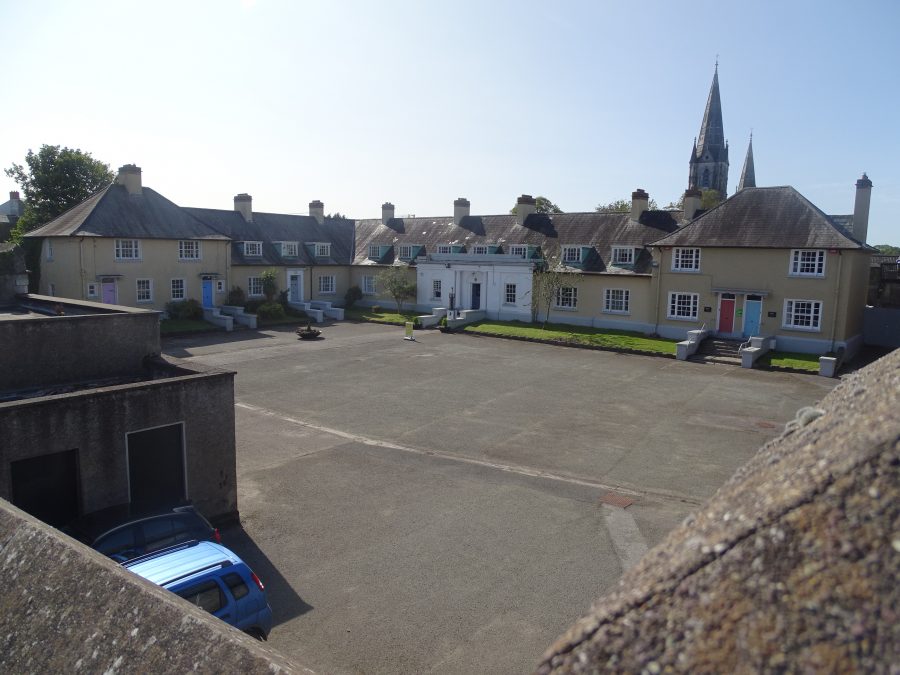
068b. Present day interior of Elizabeth Fort – former site of RIC Barracks 1920 (picture: Kieran McCarthy).
Cork Business in 1920, RTE Radio 1, 26 September 2020
Great to have a slot on The Business (show) on RTE Radio 1 yesterday speaking about the history of Cork in 1920 and the creation of the Irish International Trading Corporation (Cork).
“The future around Brexit remains unclear for Irish exporters. This week hauliers in the UK learned of potential two day delays at a de facto border in Kent. We could probably learn a thing or two from the 100 year old history of the Irish International Trading Corporation, based in Cork. Kieran McCarthy has been looking at their history”.
https://www.rte.ie/radio/radioplayer/html5/#/radio1/21840558
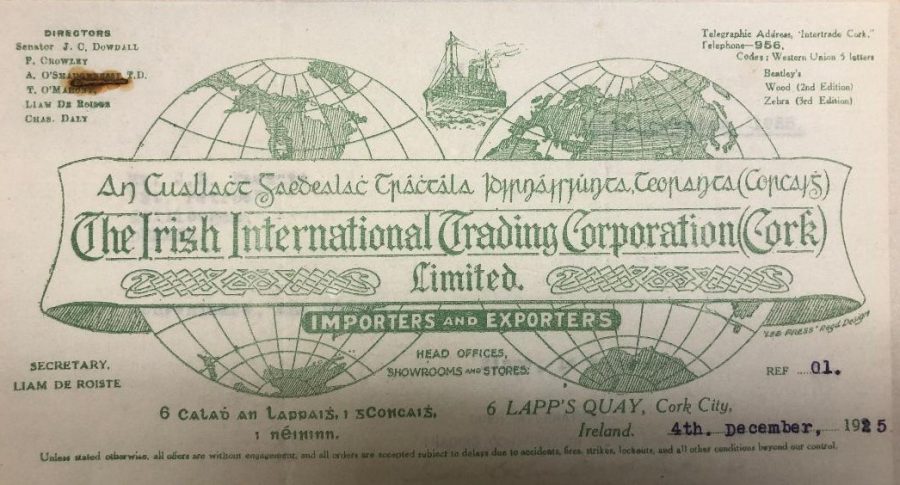
Letterhead of Irish International Trading Corporation , 1925